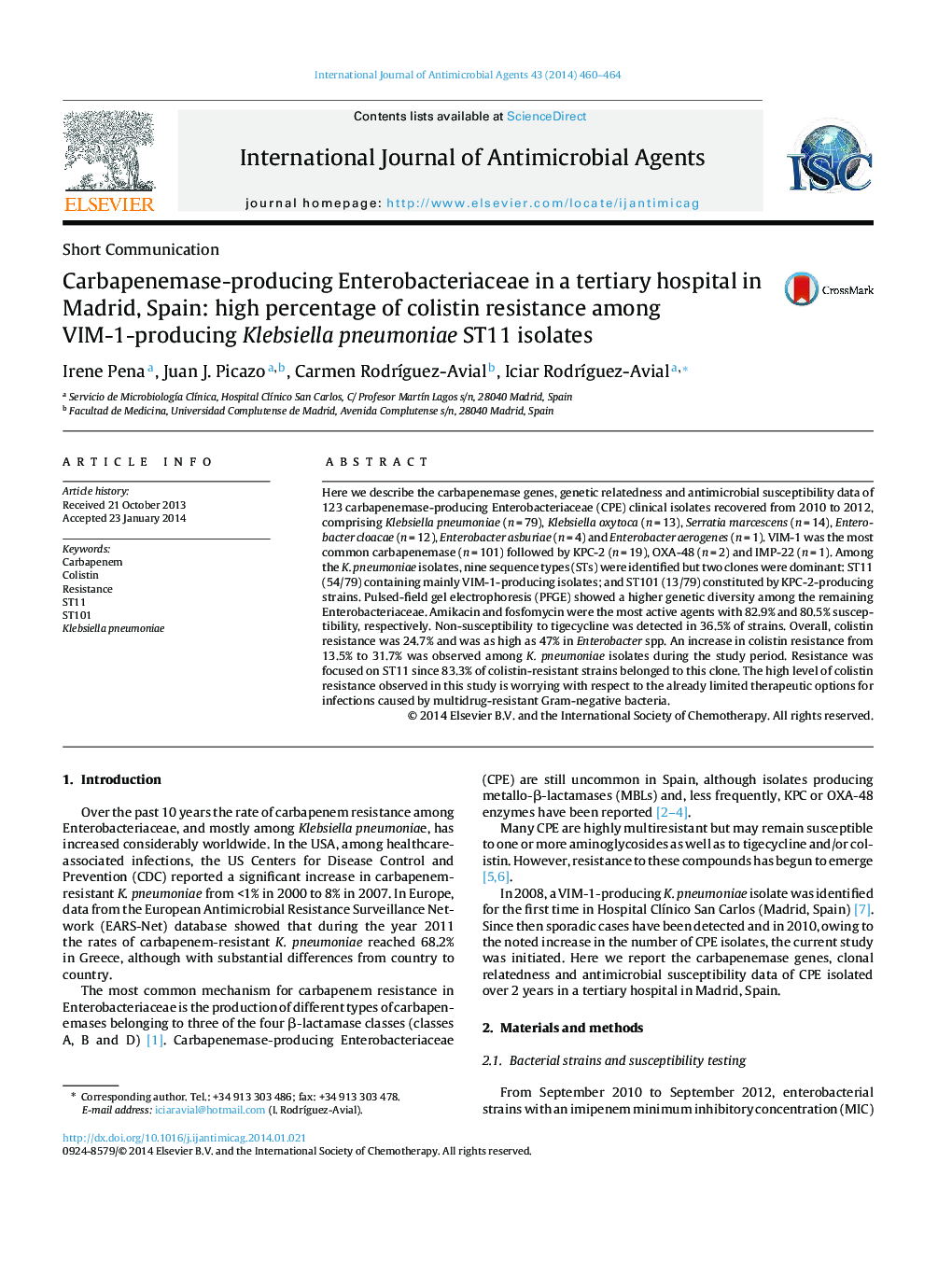| Article ID | Journal | Published Year | Pages | File Type |
|---|---|---|---|---|
| 3358906 | International Journal of Antimicrobial Agents | 2014 | 5 Pages |
Here we describe the carbapenemase genes, genetic relatedness and antimicrobial susceptibility data of 123 carbapenemase-producing Enterobacteriaceae (CPE) clinical isolates recovered from 2010 to 2012, comprising Klebsiella pneumoniae (n = 79), Klebsiella oxytoca (n = 13), Serratia marcescens (n = 14), Enterobacter cloacae (n = 12), Enterobacter asburiae (n = 4) and Enterobacter aerogenes (n = 1). VIM-1 was the most common carbapenemase (n = 101) followed by KPC-2 (n = 19), OXA-48 (n = 2) and IMP-22 (n = 1). Among the K. pneumoniae isolates, nine sequence types (STs) were identified but two clones were dominant: ST11 (54/79) containing mainly VIM-1-producing isolates; and ST101 (13/79) constituted by KPC-2-producing strains. Pulsed-field gel electrophoresis (PFGE) showed a higher genetic diversity among the remaining Enterobacteriaceae. Amikacin and fosfomycin were the most active agents with 82.9% and 80.5% susceptibility, respectively. Non-susceptibility to tigecycline was detected in 36.5% of strains. Overall, colistin resistance was 24.7% and was as high as 47% in Enterobacter spp. An increase in colistin resistance from 13.5% to 31.7% was observed among K. pneumoniae isolates during the study period. Resistance was focused on ST11 since 83.3% of colistin-resistant strains belonged to this clone. The high level of colistin resistance observed in this study is worrying with respect to the already limited therapeutic options for infections caused by multidrug-resistant Gram-negative bacteria.
